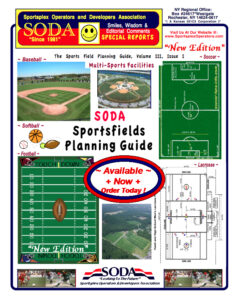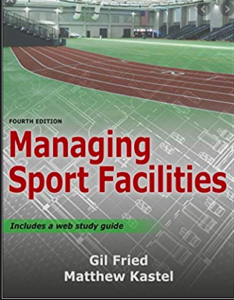101. Tools of the Trade
![]() Like any craftsman, an athletic field groundskeeper relies heavily upon the tools he or she uses to hone their craft of maintaining ballfields. From basic tools like rakes and shovels to the more specialized tools like a level board or slope gauge, groundskeepers use a wide range of hand tools to accomplish their work with a varying attention to detail.
Like any craftsman, an athletic field groundskeeper relies heavily upon the tools he or she uses to hone their craft of maintaining ballfields. From basic tools like rakes and shovels to the more specialized tools like a level board or slope gauge, groundskeepers use a wide range of hand tools to accomplish their work with a varying attention to detail.
You probably have ideas of what some of these tools are used for. You may or may not be right. A seasoned groundskeeper will likely show you several other ways he or she has used that tool for groundskeeping tasks.
In this introductory module we take a look at some of the tools of the groundskeeper’s trade. Because these tools will be used in later modules, we’ll get you familiar with their names, their application, and their care.
102. Mound & Home Plate Care
![]() So much of a baseball or softball game involves the one-on-one battle between pitcher and batter. Every pitch of every game involves the mound and home plate area. Consequently, no areas on a ballfield see more wear. From the first pitch to the last out, players look for firm, stable footing in the mound landing area, the batter’s boxes, and catcher’s box areas. If daily maintenance of the mound and home plate areas is followed, your field will likely satisfy most players who use your fields.
So much of a baseball or softball game involves the one-on-one battle between pitcher and batter. Every pitch of every game involves the mound and home plate area. Consequently, no areas on a ballfield see more wear. From the first pitch to the last out, players look for firm, stable footing in the mound landing area, the batter’s boxes, and catcher’s box areas. If daily maintenance of the mound and home plate areas is followed, your field will likely satisfy most players who use your fields.
In this module you’ll learn proper maintenance of mound & home plate areas.
103. Lip Management
![]() With 2 or 3 different surfaces, baseball and softball fields are unique. Anywhere the infield skin or warning track come in contact with turfgrass is where “lips” can form. If this happens, it is not only bad for playability, it affects proper drainage. As a result, many problems with an infield can be traced back to poorly managed lips.
With 2 or 3 different surfaces, baseball and softball fields are unique. Anywhere the infield skin or warning track come in contact with turfgrass is where “lips” can form. If this happens, it is not only bad for playability, it affects proper drainage. As a result, many problems with an infield can be traced back to poorly managed lips.
In this module you’ll learn how to properly manage a lip.
104. Infield Skin Game Day Prep
![]() It’s all about the infield skin and how well it plays. That’s what it boils down to. The reputation of a groundskeeper at any level — big leagues included — is not determined by how beautiful their grass looks. It’s not determined by how fancy their mowing pattern is. Those are things the average fan watching a game will notice.
It’s all about the infield skin and how well it plays. That’s what it boils down to. The reputation of a groundskeeper at any level — big leagues included — is not determined by how beautiful their grass looks. It’s not determined by how fancy their mowing pattern is. Those are things the average fan watching a game will notice.
The players? They’ll remember an infield that is prone to bad hops or one that drains poorly, and that’s what ballplayers will be talking about amongst themselves.
Properly maintaining an infield skin is an art. The groundskeeper needs to truly know the “personality” of the skin. How will it react to varying weather conditions?
105. Moisture Management
![]() Many groundskeepers fear water. But the reality is water is the lifeblood of a ballfield. We rely on water to help keep the infield soil as one cohesive unit, to provide a resilient playing surface, and to help reduce wear.
Many groundskeepers fear water. But the reality is water is the lifeblood of a ballfield. We rely on water to help keep the infield soil as one cohesive unit, to provide a resilient playing surface, and to help reduce wear.
That’s right. Water is the key tool in reducing wear. Moisture and clay are the glue holding infield soil together. Without moisture, your field can become hard and unforgiving to the players. By simply adding a water line out to your field, you can apply water to the skin and drastically improve the quality of your playing surface. Moisture Management is an art form…
106. Creating Foul Lines
![]() There’s something about a well manicured ballfield. It captures the attention of players and fans alike. The geometry of the sport naturally draws the eye in. With each park having unique dimensions and it’s own flavor of the local scenery, there’s variation visually from park to park. But all parks are framed with the straight, crisp, and vibrant white of the foul lines.
There’s something about a well manicured ballfield. It captures the attention of players and fans alike. The geometry of the sport naturally draws the eye in. With each park having unique dimensions and it’s own flavor of the local scenery, there’s variation visually from park to park. But all parks are framed with the straight, crisp, and vibrant white of the foul lines.
In this module, you’ll see what goes into applying these lines.
107. Base Placement & Care
![]() A well-maintained ballfield has a smooth surface, both on grass and skinned areas. But in contrast stand the bases, protruding up from the smooth surface. One wrong step, one improper slide, and injury can occur. It is up to the groundskeeper to minimize that risk.
A well-maintained ballfield has a smooth surface, both on grass and skinned areas. But in contrast stand the bases, protruding up from the smooth surface. One wrong step, one improper slide, and injury can occur. It is up to the groundskeeper to minimize that risk.
In this module you’ll see how frequent base inspection and base care — along with proper maintenance to the playing surface surrounding the bases — goes a long way toward reducing the risk of player injury. This module is presented in two sections with a couple pop quizzes along the way.
108. Rainfall Rescues
![]() “This would be the easiest job in the world… if it weren’t for that tarp.” That’s what Pat Santarone — Baltimore Orioles head groundskeeper from 1969 to 1991 — used to say. Luckily, most of you will never have to wrestle with a 175 foot tarp that can weigh up to a ton! That is definitely a job suited for fields with plenty of man power.
“This would be the easiest job in the world… if it weren’t for that tarp.” That’s what Pat Santarone — Baltimore Orioles head groundskeeper from 1969 to 1991 — used to say. Luckily, most of you will never have to wrestle with a 175 foot tarp that can weigh up to a ton! That is definitely a job suited for fields with plenty of man power.
As a groundskeeper, rainfall can create some of your biggest challenges. Coaches, players, and league officials will lobby to get back on the field as soon as possible. Your job is to resurrect the fields after rains to bring them back to being safe and playable before allowing play on them. You’re faced with a balancing act. You need to work with the field and Mother Nature to get fields ready, while understanding people want to play as soon as they can.
In this lesson we’ll show you how to get ballfields back to a playable condition, and some preventative measures that will help lesson the effects of rain.
~ ~ ~ ~ ~ ~





 [[ Available In SODA Store Online !]]
[[ Available In SODA Store Online !]]
0 Comments